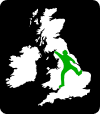
- The most recent issue to be published was 132
- For further information, please see Publishing/Despatch Schedule
- Database last updated on Mon, 01 Dec 2025 18:30:34 +0000
- Online access is currently available for all issues. Some of
the older issues are bit-map scans rather than digital copies.
journal scans.
- Online voting for CREG articles was withdrawn in June 2022. For info see
Voting for CREG articles
Contents of journal 132
December 2025
This page may take a few
seconds to load. Please wait ...
- CREG Journal 132 (0-24)
(PDF 13.5MB)
  Individual articles may be available below Individual articles may be available below
- This issue has a cover date of December 2025 and was published on 1 December 2025.
-
- Front Cover (1)
(PDF 483KB)

- Dr Matt Rowberry installing a novel positioning system for three dimensional fracture displacement monitoring in the British Cave Science Centre. Photo: John Gunn
-
- Contents (2)
(PDF 203KB)

- List of contents and masthead information.
-
- News and Notes (2) For download see previous item
- Spring 2026 Field Meeting, Hidden Earth 2026, CREG Editorial Team.
-
- A Practical Guide to 3D Cave Photography (3-6)
(PDF 1.5MB)

- Cave passages provide a wonderful if harsh environment for stereo photography. Here, Michael Perryman provides a simple 'how to' guide, aimed at allowing complete beginners to take their first steps in capturing three-dimensional images.
-
- Detection of Unknown Cavities in Caves Using Infrasound (7-8)
(PDF 591KB)

- Rafael Grimm describes a new innovative method for the detection of unknown cavities in caves using infrasound.
-
- Stations Transmitting in the VLF Spectrum (9)
(PDF 24KB)

- Knowing about those radio stations transmitting in the frequency bands used for caving-related applications can be essential. Mike Bedford investigates one such band, namely VLF.
-
- Pinger 2.0: an Updated Transmitter for Radiolocation in Flooded Passages, Part 2 (10-14)
(PDF 7.7MB)

- To conclude their discussion of this new radiolocation transmitter, Aren Leishman and Ken Smith turn their attention to constructional details and guidance on how to use the system.
-
- Micro-HeyPhone Modification (14)
(PDF 284KB)

- Chris Ross describes a Micro-HeyPhone modification to prevent feedback that can occur in some circumstances.
-
- The British Cave Science Centre - an Update (15-16)
(PDF 228KB)

- Established to provide an open-access research facility for scientists and engineers, the British Cave Science Centre is now seven years old. Here, Andrew C. Smith and John Gunn provide a reminder of the aims and ambitions of the BCSC, outline some recent developments, and stress the ongoing opportunity for technically minded cavers to make a valuable contribution.
-
- Hidden Earth 2025 (17)
(PDF 186KB)

- Chris Ross provides an overview of the UK's Hidden Earth caving conference, paying particular attention to the technology-related activities.
-
- Building Blocks (18)
(PDF 1.2MB)

- The humble relay, old technology, but still going strong! by Tony Haigh.
-
- Tuned Loop Antenna Matching Made Easy (19-21)
(PDF 1020KB)

- Brian Pease describes a simpler alternative to commonly used methods to match low-frequency tuned loop antennas to radios by adding a single capacitor to the tuned loop circuit. Easy equations are given along with methods to measure loop impedance without an impedance meter.
-
- Update (21)
(PDF 978KB)

- The Technology of Cave Diving Habitats, Andy Pitkin, CREGJ 131, pp. 3-7.
-
- Book Review - Cave Radio (22)
(PDF 282KB)

- The Radio Society of Great Britain, the UK's amateur radio organisation, has recently published an introductory book on Cave Radio, written by Mike Bedford. Rob Gill takes a look and considers whether this will encourage wider interest in cave radio and electronics.
-
- CREG Field Meeting - Autumn 2025 (23-24)
(PDF 394KB)

- CREG recently held a very successful field meeting in the Yorkshire Dales as Mike Bedford reports.
-

|

View Contents:

BCRA is a UK registered charity and is a constituent body of
the British Caving Association,
undertaking charitable activities on behalf of the BCA.
BCRA publishes a range of periodicals and books.
Click here for further information.
|
Searching
To Search our pages using Google, type a search
string in the box at the top of the page and hit your Return key
You can also search our publications catalogue at the British Caving Library
The CREG Journal Search Engine is a new, powerful search engine which will, sometime, be extended
to cover Cave & Karst Science. We have a keyword search facility on our Cave Science Indexes pages but this may be rather out-of-date.
|
For staff use: Link to Database
Show/Hide
download figures next to each item (if available and non-zero; you might need to refresh page first). Counters last
reset on Thu 03-Jan-2019 17:29:28 +00:00. The figures are non-unique
click-throughs.
|









